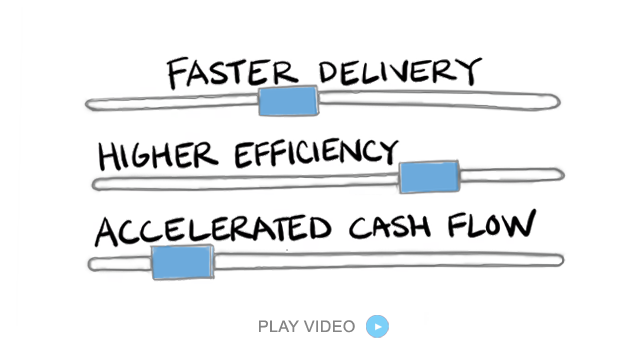
Assigning Resources Effectively in Packaging Manufacturing
Production schedulers face the critical task of ensuring that the right resources—materials, machines, and labor—are available at the right time. Resource allocation is not just about meeting production deadlines; it’s about optimizing efficiency, reducing waste, and maintaining a seamless flow of operations.
With the rise of Industry 4.0, integrated systems like PlanetTogether Advanced Planning and Scheduling (APS) software, paired with enterprise solutions such as SAP, Oracle, Microsoft, Kinaxis, or Aveva, are revolutionizing how production schedulers assign resources. These integrations bridge gaps between planning and execution, providing real-time visibility and agility in resource management.
This blog explores how production schedulers in packaging manufacturing facilities can leverage these tools to master resource allocation and drive operational success.

Understanding the Challenges in Resource Assignment
Effective resource assignment is the backbone of a production scheduler’s role. However, the task is fraught with challenges such as:
Dynamic Customer Demands: Frequent order changes require quick adjustments to resource plans.
Limited Resources: Machines, materials, and skilled labor often operate under tight constraints.
Complex Production Flows: Packaging manufacturing involves multiple stages, from design to final assembly, each with specific resource needs.
Supply Chain Disruptions: Delays in material deliveries can derail schedules, creating ripple effects across the production line.
In this high-pressure environment, traditional methods of scheduling and resource allocation often fall short. Enter advanced planning and scheduling systems like PlanetTogether, designed to integrate seamlessly with leading ERP systems to create a unified approach to resource management.


The Role of PlanetTogether APS in Resource Assignment
PlanetTogether APS provides a centralized platform where production schedulers can visualize, plan, and optimize resources with precision. The integration of PlanetTogether with ERP systems like SAP, Oracle, Microsoft Dynamics, Kinaxis, or Aveva enhances its capabilities, enabling:
Real-Time Data Synchronization: Integrated systems ensure that information about inventory levels, machine availability, and workforce capacity is always up-to-date.
Scenario Planning: PlanetTogether’s advanced simulation tools allow schedulers to create “what-if” scenarios, testing the impact of resource changes before implementation.
Prioritized Scheduling: Intelligent algorithms prioritize tasks based on deadlines, resource availability, and customer requirements.
By integrating PlanetTogether with an ERP, production schedulers can bridge the gap between high-level planning and shop-floor execution, ensuring that resources are aligned with production goals.

Benefits of Integration in Resource Assignment
Integrating PlanetTogether with ERP systems transforms resource assignment into a strategic advantage. Here’s how:
1. Enhanced Visibility Across Operations
Integration provides a holistic view of all resources across the facility. For example, combining PlanetTogether with SAP’s resource data ensures that schedulers can:
Track the status of raw materials in real time.
Monitor machine performance and downtime.
Align workforce schedules with production demands.
This comprehensive visibility enables proactive decision-making, reducing delays and bottlenecks.
2. Improved Collaboration
Seamless data sharing between systems fosters collaboration among departments. For instance, when PlanetTogether integrates with Microsoft Dynamics, production, procurement, and sales teams can:
Share updates on order changes instantly.
Align material procurement with production schedules.
Coordinate delivery timelines with production milestones.
This collaborative approach ensures that all stakeholders are on the same page, minimizing miscommunication.
3. Optimization of Resource Utilization
Advanced algorithms in PlanetTogether optimize the use of machines, materials, and labor. For example, when integrated with Oracle, schedulers can:
Automatically assign tasks to underutilized machines.
Reallocate workforce based on skill requirements.
Reduce idle time and resource wastage.
Such optimizations lead to cost savings and increased operational efficiency.
4. Agility in Managing Changes
Customer demands and market conditions often change unexpectedly. Integration with Kinaxis, known for its supply chain agility, empowers PlanetTogether to:
Adjust schedules dynamically based on real-time changes.
Reassign resources to high-priority tasks instantly.
Minimize disruptions caused by unexpected delays.
This agility ensures that production schedules remain resilient and responsive.
5. Data-Driven Decision Making
Combining PlanetTogether with analytics-driven platforms like Aveva unlocks the power of data. Schedulers can:
Analyze historical performance to forecast resource needs.
Identify trends in machine utilization and workforce productivity.
Make informed decisions backed by actionable insights.
These capabilities enable production schedulers to move from reactive to proactive resource management.

Practical Tips for Effective Resource Assignment
To maximize the benefits of integration, production schedulers can adopt the following best practices:
1. Leverage Automation
Automate repetitive tasks like material allocation and task prioritization to focus on strategic decision-making. For example, use PlanetTogether’s automation tools to generate optimal schedules with minimal manual intervention.
2. Prioritize Key Metrics
Define and monitor key performance indicators (KPIs) such as resource utilization, on-time delivery, and cycle times. Integration with ERP systems ensures these metrics are easily accessible.
3. Conduct Regular Training
Ensure that teams are trained to use integrated systems effectively. Familiarity with tools like PlanetTogether and SAP can enhance resource planning accuracy.
4. Plan for Contingencies
Use scenario planning features to prepare for potential disruptions. For instance, simulate the impact of a machine breakdown and identify alternative resource assignments in advance.
5. Foster Cross-Functional Collaboration
Encourage collaboration between production schedulers, procurement teams, and shop-floor operators. Integrated systems make it easier to share insights and align goals.
Assigning resources effectively is a complex but critical task for production schedulers in packaging manufacturing facilities. By leveraging tools like PlanetTogether and integrating them with robust ERP systems such as SAP, Oracle, Microsoft Dynamics, Kinaxis, or Aveva, schedulers can overcome traditional challenges and achieve unparalleled efficiency.
These integrated solutions provide the visibility, agility, and optimization needed to thrive in today’s dynamic manufacturing landscape. As production schedulers embrace these technologies, they not only enhance resource assignment but also drive the overall success of their facilities.
Whether your focus is on minimizing delays, maximizing efficiency, or improving collaboration, the integration of advanced planning and scheduling systems with ERP platforms is the key to staying ahead in the packaging manufacturing industry. Now is the time to explore these possibilities and take your resource management strategies to the next level.
Are you ready to take your manufacturing operations to the next level? Contact us today to learn more about how PlanetTogether can help you achieve your goals and drive success in your industry.

























LEAVE A COMMENT